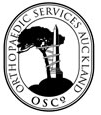Heel Pain (Plantar Fasciitis)
Heel pain is a common, debilitating and longstanding (chronic) condition which is difficult to treat.
It is caused by degenerative change within the plantar fascia tendon at the point where it attaches to the heel bone. Micro-ruptures of the diseased fibres occur and a local inflammatory process is set up within the damaged tendon which is attempting to repair itself. As the blood flow through the tendon is low, the rate of healing and tissue turnover is slow, and the condition may hence take several months to resolve. Any heel bone spurs that may be seen on X-ray are NOT the cause of the heel pain.
Firstly it is important to know that heel pain will eventually settle as time-dependent healing progresses, even if nothing is done. It is known that 80% of people who get heel pain will come right within 12 months. However, that is a long time with heel pain, and what about the poor characters that dont come right?
Overweight is often a major contributor to the problem. The aging plantar fascia is simply under too much load, and this causes the processes described above to start up, and keep going. If weight reduction can be achieved, this is often a big help. This means food restriction.
Use of soft-soled shoes and padded heel wedges are helpful, though arch orthotics frequently are not and they can be expensive. Hard soled shoes should be avoided as should all pain-aggravating footwear no matter what the social occasion.
Anti-inflammatory (NSAID) drugs are often helpful though awareness of the possibility of them causing stomach ulcers is needed. The other drug treatment is with steroid injection into the painful heel plantar fascial attachment. This can be a very effective treatment but needs to be done after the foot has been fully numbed by a local anaesthetic (posterior tibial) nerve block. This allows a painless heel injection and the opportunity to make multiple needle passes through the diseased tissue, putting the pain relieving steroid in, but also releasing tissue-damage chemicals which may themselves promote acceleration of the healing process.
The effect of the steroid drug itself will only last 3-4 weeks, but frequently, pain relief following injection lasts much longer than this and may even be curative. Depending on the response, steroid injection may be repeated , but not within 6-8 weeks and 3 injections are probably maximum. If your heel pain is related to an ACC claim, ACC will cover the full cost of assessment and steroid injection.
The next treatment option if steroid injection does not work is a 6 week course of dorsiflexion night splints made by an orthotist. The idea is to keep the plantar fascia under stretch which somehow aids the pain resolution process.They are thoroughly unpleasant and (according to Swedish studies) need to be worn at night for 6 weeks without interruption to be effective.
The final treatment option is surgery.This should not be under consideration unless all treatment options have failed to relieve pain over at least 12 months. Most operations involve a release of the plantar fascia from the heel bone attachment, done either through an open incision or through a fibreoptic viewing scope. However, I prefer to take out a central wedge of the diseased plantar fascia, leaving the side limbs intact, and drawing up the underlying (quadratus plantae) muscle to fill the gap with a good blood supply. However, as with all surgical procedures, there is a likelihood, but no guarantee, of success, with a 3-4 month full recovery time.
